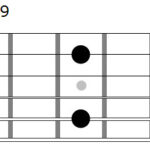Guitar building kits offer an exciting entry point into crafting your own instrument, blending the satisfaction of hands-on work with the promise of a personalized guitar. For many aspiring luthiers, the journey begins with considering the core components and how they come together. A common point of consideration, especially for those looking at brands like StewMac, LMI, and even Martin kits, revolves around neck joint options. Traditionally, the dovetail joint has been the gold standard, revered for its strength and contribution to tone. However, for some builders, particularly those newer to the craft, the idea of customization extends beyond just wood choices and hardware – it includes the very construction methods employed.
The appeal of a bolt-on neck system, such as the pre-carved straight mortise/tenon neck offered by LMI, presents an interesting alternative. These necks, often complete with features like pre-installed truss rods and metal inserts for secure attachment, can significantly simplify the neck joining process. For builders who might find the intricacies of a dovetail joint daunting, or who appreciate the adjustability a bolt-on neck can offer, this option holds considerable appeal. The ability to shape the neck profile to personal preference after it’s attached further enhances the customization aspect.
While established kit providers like LMI and StewMac have historically favored the dovetail joint in their kits, limiting immediate substitutions, the desire for flexibility remains a strong motivator for many builders. Investing significant time and effort into a guitar project naturally leads to wanting control over key materials and construction choices. This sentiment isn’t about compromising quality, but rather about tailoring the building experience to individual preferences and skill levels.
The possibility of mixing and matching components from different suppliers – perhaps pairing a Martin body with an LMI neck – underscores this drive for personalization. The market for luthier supplies offers a wealth of options, from specialized tools like those from Tippie for molds and jigs, to a diverse range of components from various manufacturers. Ultimately, the ideal guitar building experience is one that balances tradition with personal expression, allowing builders to explore different techniques and components to create an instrument that is truly their own. As the world of guitar kits evolves, the conversation around customization, particularly in areas like neck joint construction, will likely continue to shape the offerings available to aspiring luthiers.

